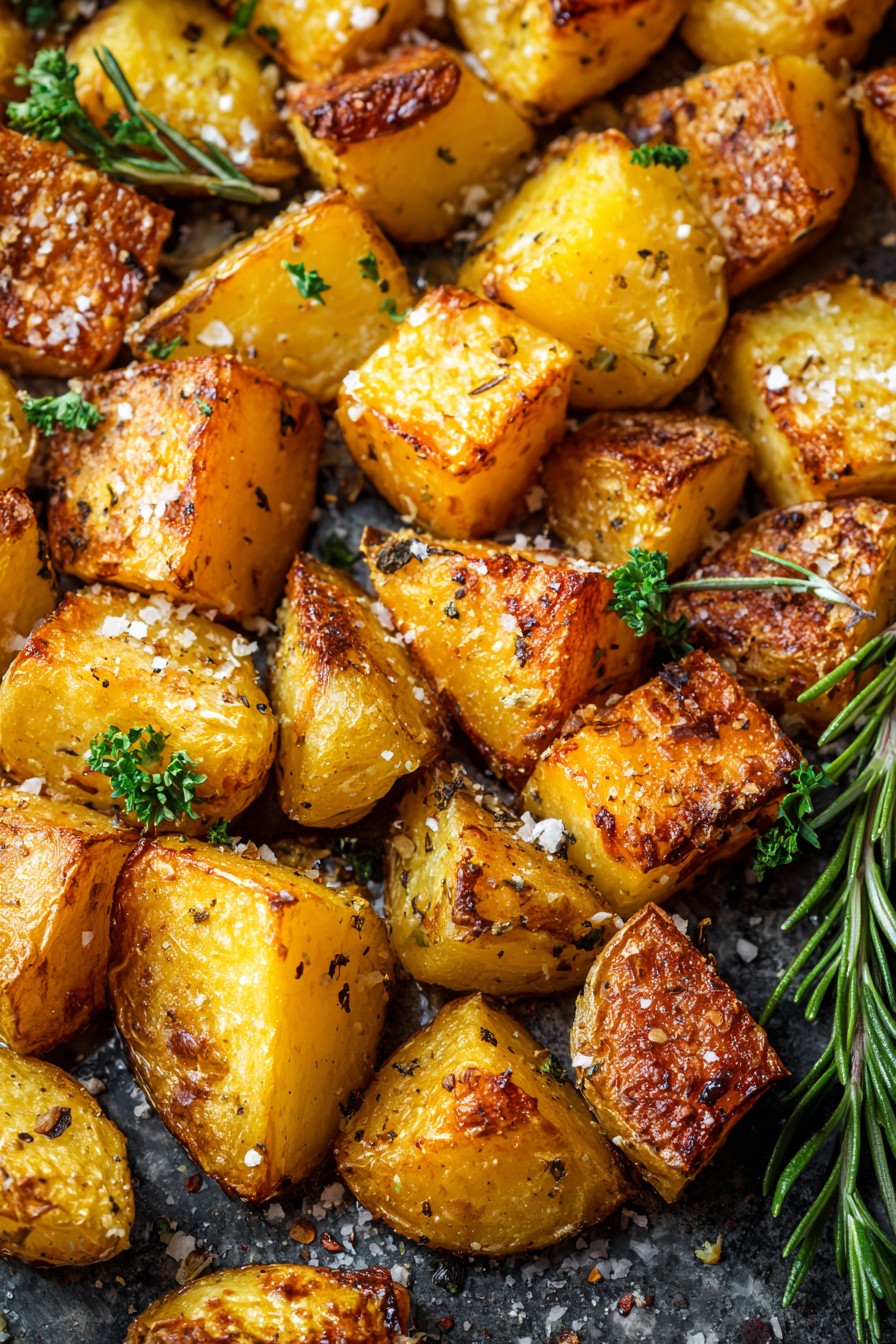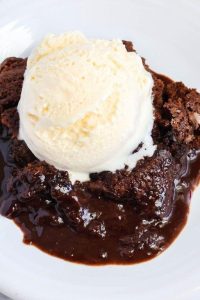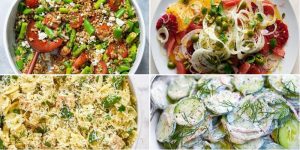Just as the foundation of any great structure requires precision engineering, so too does the creation of perfectly roasted potatoes demand meticulous technique. Journey with me through this culinary blueprint that transforms humble tubers into golden, crisp-edged masterpieces through calculated thermal application and proper starch management. This methodical approach ensures consistent results that elevate the potato from mere side dish to culinary centerpiece.
Why This Recipe Works
- The dual-temperature roasting method creates an initial steam environment that cooks the potato interior thoroughly before transitioning to high-heat caramelization, ensuring creamy centers beneath shatteringly crisp exteriors without the need for parboiling.
- Strategic starch exposure through thorough drying and rough-cut surfaces maximizes the Maillard reaction and crispification potential, creating more surface area for oil adhesion and browning while preventing the steamed texture that plagues many roasted potato attempts.
- Proper fat selection and distribution using high-smoke-point avocado oil ensures even heat transfer and prevents burning while the addition of duck fat during the final roasting phase introduces complex flavor compounds and enhanced crispness through its unique fatty acid composition.
- The inclusion of baking soda in the initial seasoning mixture accelerates pectin breakdown in the potato surface, creating a roughened texture that captures oil and forms an exceptionally crisp crust while the rice flour coating provides an additional crispness layer through its high amylose content.
- Resting period after initial roasting allows internal moisture to redistribute evenly throughout the potato flesh, preventing sogginess and ensuring the final high-heat blast creates maximum surface crispness without compromising the delicate creamy interior texture.
Ingredients
- 2 pounds russet potatoes, peeled and cut into 1.5-inch irregular chunks
- 3 tablespoons avocado oil
- 2 tablespoons duck fat, melted
- 1 tablespoon rice flour
- 1/2 teaspoon baking soda
- 1 tablespoon kosher salt
- 1 teaspoon freshly cracked black pepper
- 4 cloves garlic, smashed but not peeled
- 4 sprigs fresh rosemary
- 2 tablespoons chopped fresh parsley for garnish
- Flaky sea salt for finishing
Equipment Needed
- Large rimmed baking sheet
- Wire cooling rack
- Large mixing bowl
- Kitchen towels or paper towels
- Sharp chef’s knife
- Cutting board
- Measuring spoons and cups
- Tongs or spatula
Instructions

Preparation and Surface Treatment
Begin by thoroughly peeling your russet potatoes and cutting them into irregular 1.5-inch chunks, ensuring varied surface geometries to maximize crisp edge formation. The irregular shapes create different thermal transfer rates that result in textural complexity. Immediately transfer cut potatoes to a large bowl of cold water and agitate vigorously to remove excess surface starch, then drain completely. Using clean kitchen towels or paper towels, pat each potato piece completely dry—this moisture removal is critical for proper oil adhesion and browning initiation. In your large mixing bowl, combine the dried potato chunks with avocado oil, rice flour, baking soda, kosher salt, and black pepper. Toss vigorously for at least two minutes until every surface is coated and the flour mixture has created a slightly pasty coating on the potato exteriors. The mechanical action of tossing helps rough up the potato surfaces, creating microscopic ridges that will become crisp points during roasting. Professional Tip: For maximum crispness, let the coated potatoes rest uncovered at room temperature for 15 minutes after tossing to allow the baking soda to begin breaking down surface pectin.
Initial Roasting Phase
Preheat your oven to 400°F and position one rack in the center position. Arrange the coated potato chunks in a single layer on a wire cooling rack set inside your rimmed baking sheet, ensuring adequate air circulation around each piece. The rack elevation prevents steaming and promotes even browning on all surfaces. Roast for 25 minutes at 400°F until the potatoes have developed a pale golden color and the surfaces feel firm but not fully crisp when pressed. During this phase, the moderate heat allows the potato interiors to cook through completely while the exterior begins its Maillard reaction development. Do not disturb the potatoes during this initial roasting—the undisturbed thermal environment ensures even cooking. After 25 minutes, remove the baking sheet from the oven and carefully flip each potato piece using tongs to expose all surfaces to equal heating. The flipping process redistributes the rendered fats and ensures uniform color development.
Fat Application and Flavor Infusion
While the potatoes complete their initial roasting phase, prepare your flavor infusion elements. In a small saucepan, gently melt the duck fat over low heat until liquid but not smoking. Combine the melted duck fat with the smashed garlic cloves and rosemary sprigs, allowing the aromatics to steep in the warm fat for 10 minutes to extract their essential oils and flavor compounds. After flipping the potatoes following the initial roast, carefully brush each piece with the infused duck fat mixture using a pastry brush, ensuring complete coverage of all surfaces. The duck fat not only adds rich flavor but also contains specific fatty acids that promote crisping at higher temperatures. Distribute the steeped garlic cloves and rosemary sprigs evenly across the baking sheet among the potatoes—they will continue releasing their aromatic compounds during the final roasting phase. Professional Tip: Reserve a tablespoon of the infused duck fat for finishing to enhance the final presentation and flavor impact.
Final High-Temperature Crisping
Increase your oven temperature to 450°F and return the baking sheet to the oven, now positioned in the upper third of the oven cavity to maximize top browning. Roast for an additional 20-25 minutes at this elevated temperature, monitoring closely during the final 5 minutes for optimal color development. The high heat rapidly vaporizes any remaining surface moisture while creating the characteristic crisp crust through accelerated Maillard reactions and slight caramelization of surface sugars. Rotate the baking sheet halfway through this final phase to account for any hot spots in your oven. The potatoes are ready when they achieve a deep golden-brown color with darker crisp edges and emit a hollow sound when tapped. The internal temperature should register between 205-210°F when tested with an instant-read thermometer, indicating complete starch gelatinization.
Resting and Final Presentation
Remove the potatoes from the oven and immediately transfer them from the baking sheet to a large serving platter using a spatula, leaving behind any excess fat and the spent aromatics. Allow the roasted potatoes to rest undisturbed for 5-7 minutes before serving—this critical resting period allows the internal steam to redistribute evenly, preventing sogginess and setting the crisp exterior. During this resting phase, the starches within the potato complete their final structural set, ensuring the creamy interior texture remains distinct from the crisp shell. Just before serving, garnish with freshly chopped parsley and a light sprinkling of flaky sea salt to enhance both visual appeal and final seasoning balance. Drizzle with the reserved infused duck fat for added sheen and flavor complexity. Professional Tip: For maximum crispness retention, serve immediately after the resting period rather than holding at warm temperatures.
Tips and Tricks
Beyond the fundamental technique outlined in the instructions, several advanced approaches can elevate your roasted potatoes to professional standards. When selecting potatoes, consider the specific gravity—higher density russets typically contain less moisture and more starch, resulting in superior crispness. For exceptional texture, consider a 30-minute cold water soak after cutting, changing the water twice to remove additional surface starch that can inhibit browning. The drying process can be enhanced by spreading the cut potatoes on sheet pans and refrigerating uncovered for up to 2 hours, which further reduces surface moisture through evaporation. For flavor development, consider steeping your duck fat with additional aromatics such as thyme sprigs, black peppercorns, or even a strip of lemon zest to create more complex flavor profiles. The baking soda quantity can be adjusted based on potato variety—waxy potatoes may benefit from slightly increased baking soda (up to 3/4 teaspoon) to better break down their stronger pectin networks. If duck fat is unavailable, rendered chicken fat or even lard provides similar crisping properties, though olive oil should be avoided for the high-temperature phase due to its lower smoke point. For service considerations, these potatoes can be held at room temperature after the initial 400°F roasting phase for up to 2 hours before completing the final high-heat crisping, making them ideal for dinner party preparation. The rice flour can be substituted with potato starch or cornstarch, though rice flour provides the most neutral flavor and reliable crispness. When testing for doneness, look for the formation of small blisters on the potato surfaces—these indicate proper moisture evaporation and crust formation. For extra crispness, some chefs employ a technique called “double roasting” where the potatoes are removed after the final crisping phase, allowed to cool completely, then returned to a 500°F oven for 5-7 minutes immediately before service. Storage considerations include never refrigerating cooked roasted potatoes, as the moisture condensation upon cooling destroys the carefully developed crisp texture—instead, hold at room temperature and re-crisp briefly if necessary. The garlic cloves roasted alongside the potatoes can be squeezed from their skins and mashed into the reserved duck fat to create a flavorful compound butter or spread for bread service.
Recipe Variations
- Herb-Crusted Variation: Replace the rosemary with equal parts fresh thyme, oregano, and marjoram, and add 2 tablespoons of finely grated Parmesan cheese to the initial coating mixture. The cheese melts during roasting to create a savory crust that adheres to the potato surfaces, while the herb combination provides a Mediterranean flavor profile that pairs exceptionally with roasted meats or fish. Increase the final roasting temperature to 475°F to ensure the cheese forms a crisp rather than greasy coating.
- Spiced Sweet Potato Adaptation: Substitute russet potatoes with orange-fleshed sweet potatoes and replace the baking soda with 1 teaspoon smoked paprika, 1/2 teaspoon ground cumin, and 1/4 teaspoon cayenne pepper. The natural sugars in sweet potatoes caramelize beautifully at high temperatures, while the spice blend creates a complex flavor profile with subtle heat. Reduce the initial roasting time to 20 minutes as sweet potatoes contain more moisture and sugar that can burn if overexposed to prolonged high heat.
- German-Style Kartoffeln: Use Yukon Gold potatoes instead of russets and incorporate 2 tablespoons of caraway seeds and 1 tablespoon of sweet Hungarian paprika into the initial coating. The waxier texture of Yukon Golds creates a creamier interior contrast to the crisp exterior, while the caraway provides distinctive flavor notes characteristic of German potato preparations. Serve with a dollop of whole-grain mustard and fresh dill for authentic presentation.
- Truffle-Infused Elegance: After the final roasting, toss the hot potatoes with 1 tablespoon of white truffle oil and 2 tablespoons of finely chopped chives instead of parsley. The heat of the potatoes releases the truffle aroma without cooking off the delicate compounds, while the chives provide both color contrast and mild onion flavor. This variation transforms the humble roasted potato into a luxurious side dish suitable for special occasions and fine dining presentations.
Frequently Asked Questions
Why do my roasted potatoes often turn out soggy instead of crisp?
Sogginess typically results from three primary issues: insufficient surface drying before oil application, overcrowding on the baking sheet that creates a steaming environment, or inadequate oven temperature management. The moisture content in potatoes must be thoroughly removed from the surface through diligent drying to ensure proper oil adhesion and browning initiation. Overcrowding prevents proper air circulation and creates localized steam pockets that inhibit crisp formation. Additionally, oven temperatures that are too low fail to rapidly vaporize surface moisture, resulting in steamed rather than roasted textures. Using a wire rack elevates the potatoes and ensures heat circulates completely around each piece, while the dual-temperature method provides thorough internal cooking before crisp development.
Can I prepare these potatoes ahead of time for a dinner party?
Absolutely, though proper staging is crucial for maintaining optimal texture. Complete the initial 400°F roasting phase and the first flip, then allow the potatoes to cool completely at room temperature. They can be held in this state for up to 4 hours before proceeding with the final high-temperature crisping phase. Do not refrigerate at any point, as the condensation that forms upon cooling will reintroduce surface moisture that compromises crispness. When ready to serve, complete the duck fat application and final roasting at 450°F—you may need to add 3-5 minutes to the final roasting time since you’re starting with cooled potatoes. This approach actually enhances flavor development as the seasonings have more time to penetrate.
What’s the purpose of the baking soda in the coating mixture?
The baking soda serves as an alkaline agent that accelerates the breakdown of pectin in the potato cell walls during roasting. This controlled breakdown creates a roughened, slightly porous surface texture that provides more nucleation sites for oil adhesion and significantly increases the surface area available for browning reactions. Additionally, the alkaline environment promotes Maillard reaction efficiency, resulting in deeper color development and more complex flavor formation at lower temperatures than would otherwise be possible. The quantity used is precisely calibrated to achieve this textural modification without imparting any detectable soapy flavor that can occur with excessive baking soda application.
Why use both avocado oil and duck fat instead of just one cooking fat?
The combination leverages the distinct properties of each fat to achieve optimal results. Avocado oil possesses a high smoke point (approximately 520°F) that makes it ideal for the initial roasting phase where prolonged heat exposure occurs. Its neutral flavor profile allows the potato’s natural taste to shine through. Duck fat, with its rich flavor compounds and unique fatty acid composition, is added during the final roasting phase to contribute distinctive taste notes and enhance crispness through its specific rendering properties. The duck fat also contains natural emulsifiers that help create a more uniform coating on the potato surfaces, resulting in consistent browning and texture development throughout.
Can I use other potato varieties with this roasting method?
While russet potatoes are ideal for this technique due to their high starch content and low moisture, other varieties can be successfully adapted with minor adjustments. Yukon Gold potatoes will produce creamier interiors with slightly less crisp exteriors—reduce the baking soda to 1/4 teaspoon to account for their different pectin structure. Red potatoes, being waxier, benefit from increased baking soda (up to 3/4 teaspoon) and a longer initial roasting phase to ensure thorough cooking. Fingerling potatoes can be roasted whole or halved lengthwise—adjust cooking times downward by approximately 10 minutes total due to their smaller mass. The fundamental principles remain consistent across varieties, though starch content and moisture levels will influence the final texture balance.
Summary
This technique-driven approach to oven-roasted potatoes employs dual-temperature roasting, strategic starch management, and proper fat selection to achieve consistently crisp exteriors with creamy interiors. The method transforms basic ingredients through precise thermal application and understanding of food science principles, resulting in restaurant-quality potatoes suitable for both everyday meals and special occasions.
Oven Roasted Potatoes Easy
5
servings15
minutes50
minutesIngredients
Instructions
- 1 Peel and cut potatoes into irregular 1.5-inch chunks, then soak in cold water and pat completely dry.
- 2 Toss dried potatoes with avocado oil, rice flour, baking soda, salt, and pepper until thoroughly coated.
- 3 Arrange on wire rack set in baking sheet and roast at 400°F for 25 minutes until pale golden.
- 4 Flip potatoes, brush with infused duck fat mixture, and add garlic and rosemary to the pan.
- 5 Increase oven to 450°F and roast for 20-25 minutes until deeply golden and crisp.
- 6 Rest potatoes for 5-7 minutes, then garnish with parsley and flaky sea salt before serving.



